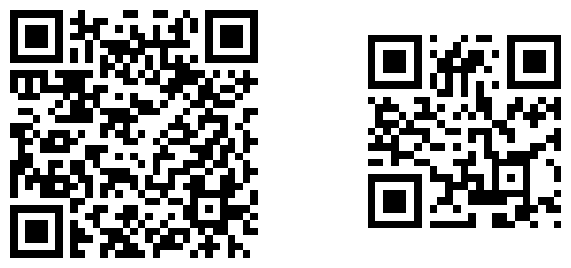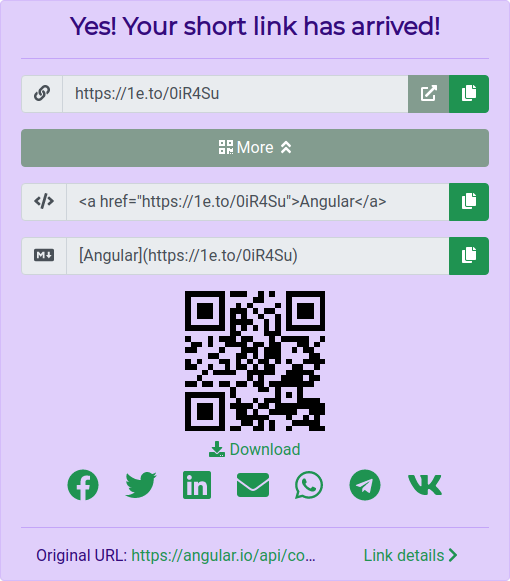QR codes
When you shorten a URL, you get a QR code for its short version, for free
Free Feature
Why QR codes?
A QR code (QR stands for “Quick Response”) is a two-dimensional barcode that can be printed, tattooed, painted, engraved or mowed on a lawn. It can in general contain any textual information, but for the purposes of this article we’ll narrow the scope down to those representing URLs.
One of main purposes of short URLs is facilitating their “offline” use, when one needs, for instance, to type them manually into the browser.
When it comes to mobile devices, though, the simplest way to share a page is providing a QR code — any modern phone is capable of scanning a QR-encoded URL.
Brevity is the soul of wit
What’s even more interesting is that shorter URL result in smaller, better readable QR codes:

That’s an extra argument in favour of using a URL shortener (other arguments include link performance analysis, password protection, redirection rules etc.)
How to get a QR code
once.to is a free link shortener that offers downloadable QR codes right on its front page.
The code is initially hidden behind the More button, which expands the shortening result:

Simply click on the Download link under the code to save it as a PNG image.
For a registered user, a similar widget is available on the Link details page, with a QR code for each link.
Tags: free feature, link, QR code, redirect, short link, short URL, URL
